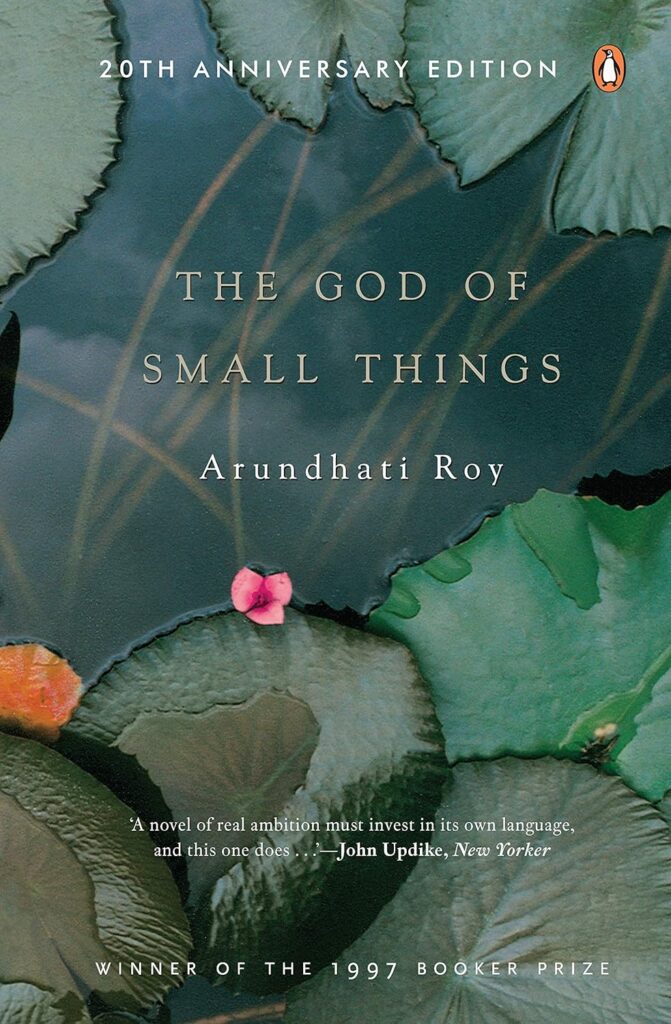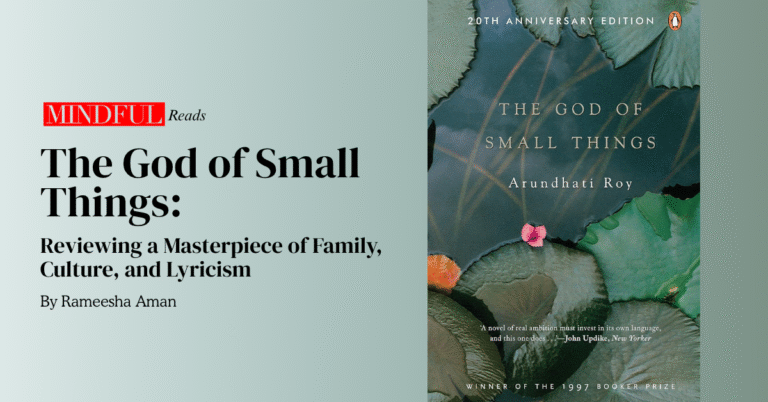Reviewing a Masterpiece of Family, Culture, and Lyricism
Ever since its publication in 1997, Arundhati Roy’s The God of Small Things has become a staple read for literary enthusiasts in South Asia and beyond. Its enduring popularity and appeal, if nothing else, are testament enough to the novel’s quality and finesse.There are many qualities in The God of Small Things that justify its position as one of the best literary accomplishments of this century. The first is the plot, which spans multiple generations across a single family. The main protagonists of the story, Estha and Rahel, are twin siblings born into a wealthy family in Ayemenem, Kerala. The immediate family dynamic is already broken when the twins are born, as their mother chooses to divorce their alcoholic father shortly after their birth and moves back into her parents’ home. Thus, the twins come to live with their mother, Ammu, their grandmother, Mammachi, their uncle Chacko, and their great-aunt, Baby Kochamma, in their ancestral house. The twins and their mother are then regarded as burdens on the rest of the family and are subjected to pointed prejudice by the matrons of the house. Mammachi’s clear deference to Chacko, her only male heir, further alienates Ammu and her children from the rest of the family.

The main action of the story concerns the summer of 1969, when the family takes a trip to Cochin to welcome Chacko’s divorced English wife, Margaret, and their daughter, Sophie Mol. Margaret’s husband, Joe, has died in a car accident, and so Chacko invites her and Sophie Mol to spend the summer holidays with him in India. Margaret accepts, and the family – including Chacko, Ammu, Estha, Rahel, and Baby Kochamma – travels to Cochin in their car to pick them up from the airport. For the twins, however, the main attraction of the trip is going to see The Sound of Music in the theatre. They are especially enamoured by the movie as it projects scenes of a happy and placid domestic life – in sharp contrast to their own lives, which remain woefully scarce of either love or attention. However, at the theatre, Estha is molested by a drinks vendor, and Rahel is hurt by her mother’s scolding remarks. The twins then realise that they have only each other for comfort.
The next day, while receiving Margaret and Sophie Mol, the twins are inevitably jealous of the attention and love shown to the foreign guests and retreat further into their own company. Upon returning to Ayemenem, they ignore the new guests and instead run off to play with their beloved friend Velutha, a carpenter who also works for the family. Velutha, however, is an untouchable and a member of the village’s Communist party.
In a rush of dramatic action following the arrival of Sophie Mol, the fragile family ties that bind the main characters unravel quickly, resulting in far-reaching consequences in the twins’ lives.
The story picks up twenty-three years later, when both Rahel and Estha return to Ayemenem to visit their ancestral house. The house, now empty except for Baby Kochamma and her servant, is as desolate and derelict as the twins’ own lives.
There are many angles from which to view the main plot points in Roy’s novel. The first is the damage done to children’s psyches by the prejudices held by the adults in their lives. The second is the norms that exist in South Asian cultures, enforced even by well-educated, respectable families. There is also a lesson in female disempowerment: that women, try as they might, would ultimately lose in a society where momentum is driven by men’s needs rather than women’s. It can be argued, though, that the book is guilty of pandering to a specific audience, committing the sin of being too agreeable towards certain stereotypes presumed of South Asian societies.
Ultimately, however, the real triumph of the novel is Roy’s incredible writing – the lyricism evident in each sentence, so that the entire story reads like an elaborate, well-gilded poem rather than static prose. Equally commendable is the masterful manoeuvring between the timelines in the plot, which shuffle back and forth without ever making the reader feel off-balance or confused.
By strength of the writing alone, it can be unequivocally said that this book will stay with a reader for years to come.
By Rameesha Aman
rameesha763@gmail.com



